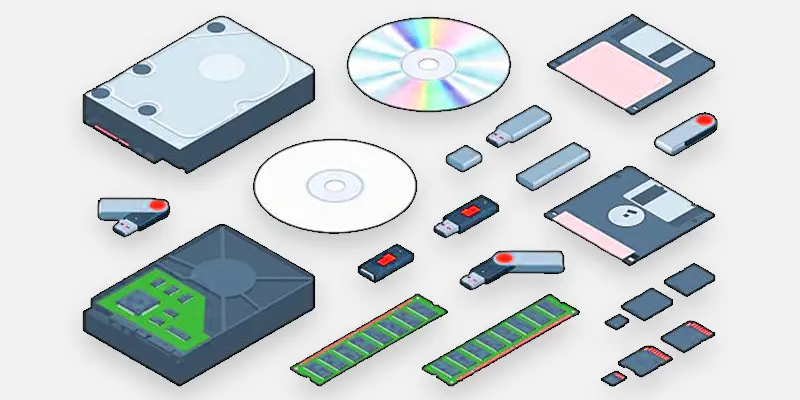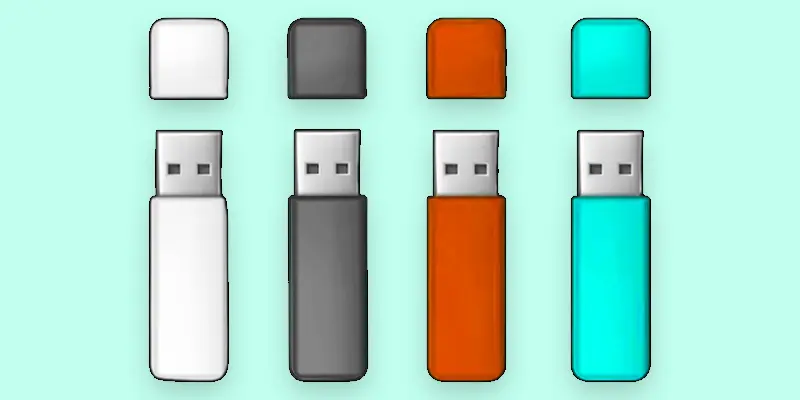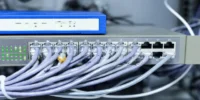Types of Memory in Computers | A Quick Guide for Beginners to Experts
Published: 4 Feb 2025
Computer Memory Types
Computers use different types of memory to process and store data efficiently. Have you ever noticed your system slowing down when too many apps are open? That’s because each type of memory, RAM, ROM, cache, and storage, plays a role in performance. If your computer takes forever to load, upgrading its memory might be the solution. Think of memory as a library without proper organization; finding what you need takes longer. Let’s explore the different types of computer memory and how they affect speed and efficiency.
Types of Computer Memory
Computers use different types of memory to store and process data efficiently. Memory is categorized into primary, secondary, virtual, and other types, each playing an important role in performance and speed.
Primary Memory
Primary memory, or volatile memory, refers to the computer’s main memory that temporarily stores data while the system operates. It consists of RAM, cache, and registers, all essential for quick data processing. However, all information is erased when the computer shuts down.
Random Access Memory
RAM is a type of primary memory that temporarily holds data while a computer is operating. It allows fast access to data, ensuring the smooth functioning of applications and programs. However, the stored data is erased when the computer is turned off.
Static RAM (SRAM)
Static RAM (SRAM) is a quicker and more dependable form of RAM that stores data using flip-flops, in contrast to Dynamic RAM (DRAM). It doesn’t require refreshing, which results in faster access speeds. However, it tends to be costlier and consumes more power compared to DRAM.
Dynamic RAM (DRAM)
Dynamic RAM (DRAM) is a memory type that saves data in capacitors, which require regular refreshing to keep the stored information intact. It is slower than SRAM but more cost-effective, making it commonly used for system memory in computers. DRAM consumes less power than SRAM.
Cache Memory
Cache memory is a small, rapid storage space near the CPU that is intended to store frequently accessed data for speedier access. Although it has a limited capacity, it speeds up processing by reducing the amount of time needed to obtain data from the main memory.
Register Memory
Register memory is the fastest form of memory, situated directly within the CPU. It temporarily holds small amounts of data to facilitate rapid processing during computations and tasks. Registers are essential for executing instructions efficiently.

Secondary Memory
Long-term, non-volatile secondary memory keeps information safe even while the computer is not in use. It comprises storage devices including optical discs, solid-state drives, and hard drives (HDDs). While slower than primary memory, secondary memory provides significantly more storage space.
Hard Disk Drive (HDD)
A hard disk drive is a secondary storage device that stores and retrieves data using spinning platters. It functions more slowly than solid-state drives, but it provides enormous storage at an affordable price. HDDs are frequently used for long-term data storage.
Solid-State Drive (SSD)
A Solid-State Drive is a fast, non-volatile storage solution that relies on flash memory to save data. Unlike HDDs, SSDs lack moving parts, providing quicker speeds, better durability, and improved energy efficiency. SSDs are perfect for quicker data access and enhancing overall computer performance.
Optical Discs
Optical discs, including CDs, DVDs, and Blu-ray, use lasers to read and write data, providing a reliable way to store information. These discs are often used for storing media like music, movies, and software. While they offer portable storage, they are slower compared to modern storage devices like SSDs.
Flash Memory
Electrical circuits are used in flash memory, a form of non-volatile storage, to store data. Because of its quick performance and portability, it is frequently found in devices like SSDs, memory cards, and USB drives.

Read-Only Memory (ROM)
ROM is a non-volatile memory that retains data even without power. It holds critical system information, like the startup instructions of a computer. Since ROM is read-only, its data cannot be easily altered.
Masked ROM (MROM)
Data that has been pre-programmed during the manufacturing process and cannot be altered later is known as masked ROM (MROM). It is typically used for storing fixed data, such as firmware, and cannot be modified once programmed. MROM is cost-effective but lacks flexibility for updates.
Programmable ROM (PROM)
Programmable ROM (PROM) is a kind of ROM that, with the use of a specialized programming tool, enables data to be written once after production. Once data is programmed, it cannot be changed or erased. PROM is useful for storing firmware that doesn’t need frequent updates.
Erasable Programmable ROM (EPROM)
One kind of ROM that can be cleaned and reprogrammed with ultraviolet (UV) radiation is called Erasable Programmable ROM (EPROM). It is often used for storing firmware that may need periodic updates, allowing new data to be written after erasure.
Electrically Erasable Programmable ROM (EEPROM)
Data can be deleted and reprogrammed using electrical impulses instead of UV light, thanks to a form of ROM called Electrically Erasable Programmable ROM (EEPROM). It offers the convenience of reprogramming without requiring physical exposure to light.
Virtual Memory
Virtual memory is a method that boosts the system’s memory by usinga portion of the hard drive as extra storage when the physical RAM is fully used. It enables programs to continue running despite limited physical memory, although it’s slower than using RAM directly.
Page File / Swap Memory
A page file, or swap memory, is a section of virtual memory that temporarily holds data from RAM when the system’s physical memory is exhausted. It helps prevent system crashes by swapping inactive data to the hard drive. However, it’s slower than using actual RAM.
Cloud Storage
Cloud storage is an online data storage solution that enables users to save and retrieve files from anywhere with an internet connection. It provides scalability, convenience, and eliminates the need for physical storage devices. Common examples include Google Drive and Dropbox.
Google Drive, Dropbox, OneDrive
Popular cloud storage services that let users save, share, and access data online include Google Drive, Dropbox, and OneDrive. They offer seamless synchronization across devices and provide varying amounts of free and paid storage options.
External Memory
External memory refers to storage devices that are connected to a computer externally, such as USB drives, external hard drives, and SD cards. These devices offer additional storage space and are portable, making it easy to transfer data between computers.
External Hard Drives
External memory refers to storage devices that are connected externally to a computer, such as SD cards, USB drives, and external hard drives. These portable devices offer additional storage capacity and facilitate data transfer between PCs.
SD Cards
Compact and removable, SD cards are commonly found in cameras, cellphones, and other devices. They offer a simple method for transferring and storing data in many formats. SD cards are reliable and easy to use for expanding device storage.

Conclusion About the Type of Computer Memory
Knowing the various types of computer memory helps improve your device’s efficiency and performance. From primary memory like RAM and cache to secondary storage options like HDDs, SSDs, and cloud storage, each type plays a vital role in your system’s functionality. Whether you’re looking to enhance speed or increase storage, choosing the right memory solution is key. Ready to upgrade your storage or learn more? Explore the best options that suit your needs and boost your device’s performance today.
FAQS – Computer Memory Type for Beginners
A computer has two main types of memory: primary memory (volatile) and secondary memory (non-volatile).
The types of memory, ranked from highest to lowest speed, are registers, cache memory, RAM, and secondary memory (HDD, SSD).
Memory types in computer architecture include primary memory (RAM, cache, registers) and secondary memory (HDD, SSD, optical discs).
No, computer memory refers to all storage types, while RAM is just one type of primary memory used for temporary data storage.
Yes, you can increase your computer’s memory by upgrading the RAM or adding external storage like HDDs/SSDs for more space.
When memory is full, the system slows down, as it has to rely on slower storage devices or page files, causing delays in data processing.

- Be Respectful
- Stay Relevant
- Stay Positive
- True Feedback
- Encourage Discussion
- Avoid Spamming
- No Fake News
- Don't Copy-Paste
- No Personal Attacks

- Be Respectful
- Stay Relevant
- Stay Positive
- True Feedback
- Encourage Discussion
- Avoid Spamming
- No Fake News
- Don't Copy-Paste
- No Personal Attacks





